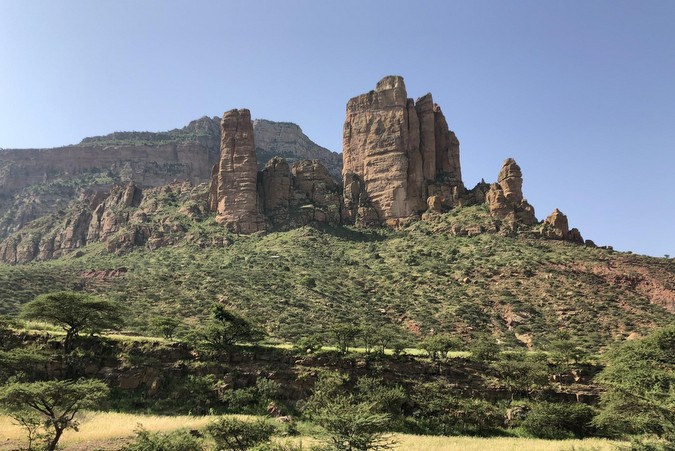
I’m more than 2,000 metres high – barefoot – toes searching for a grip on the cliff face. A harness around my waist and the advice of our guides are the only things preventing me from injury. Our goal, I know, will be worth it. At the top of this towering rock is Abuna Yemata Guh, a sacred rock-hewn church boasting stunning views of Ethiopia’s Tigray region. It is a back-breaking climb to get there, not everyone can do it, but the view alone is worth the effort, while inside holds centuries-old wonders.
Our adventure began in Aksum, the former capital of the Aksumite Empire now a tourist town of around 70,000 people. Here, my partner Martin and I met our tour operator who took us on a nearly four-hour drive to the foot of the rock on which Abuna Yemata sits.
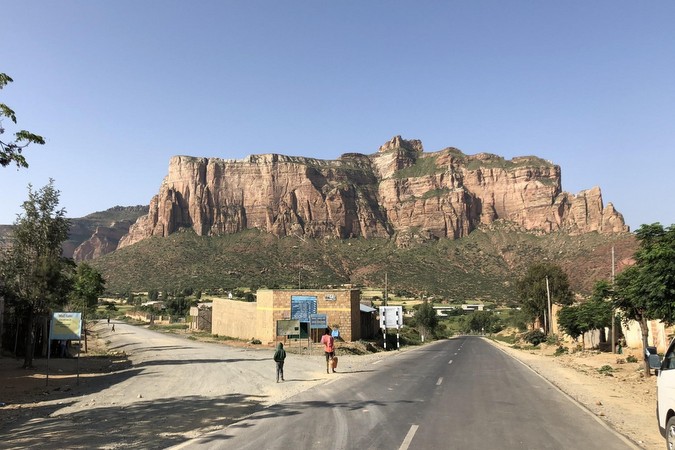
Abuna Yemata is just one of Ethiopia’s many beautiful churches carved from rock. The most famous are the 11 medieval monolithic cave churches found in Lalibela, a mountainous area around 650 km from the capital Addis Ababa. Typically, and unlike Abuna Yemata, they are dug into the earth, so the roofs sit at ground level.
However, quite apart from being constructed on a 2,500-metre-high spire, we found Abuna Yemata unique among the other Ethiopian churches. To begin with, the views it offers over Gheralta Mountain are jaw-dropping, while the panoramic vistas over the plains below are life-affirming. Its remote location and hazardous access (they call it the least accessible place of worship on Earth) ensure there are very few tourists. It’s also fascinating to note that the church is still used by locals – mothers clamber up the rock face with babies strapped to their backs to pray.
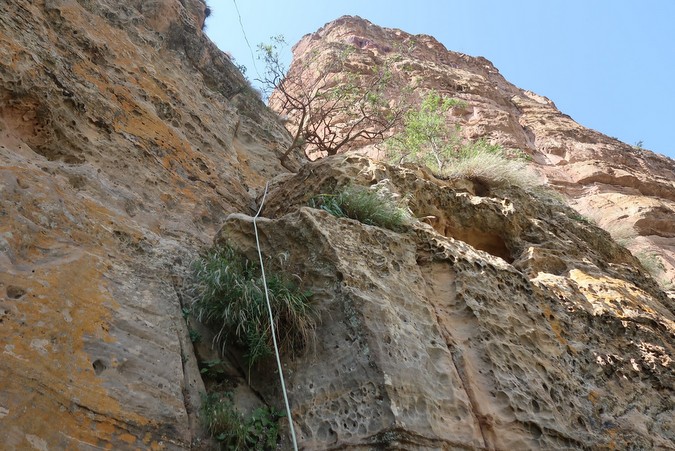
Our climb started with a relatively simple 30 minute hike up a steep incline. When we hit the middle section, however, our guides took us to one side, strapped us into harnesses, and attached safety ropes. After removing our shoes out of respect for the holy land we were about to reach, we started our ascent. It was difficult, often scary, work. We scrambled for secure stones and reached for the assistance of our local guides just to make it up.
On a side note, if you go to Abuna Yemata, take a local guide (not just your tour operator guide). Not only are they very knowledgeable and help you along the climb, but they are required by local law. You will be asked to tip well at the end of your climb, but it’s worth the extra cash.
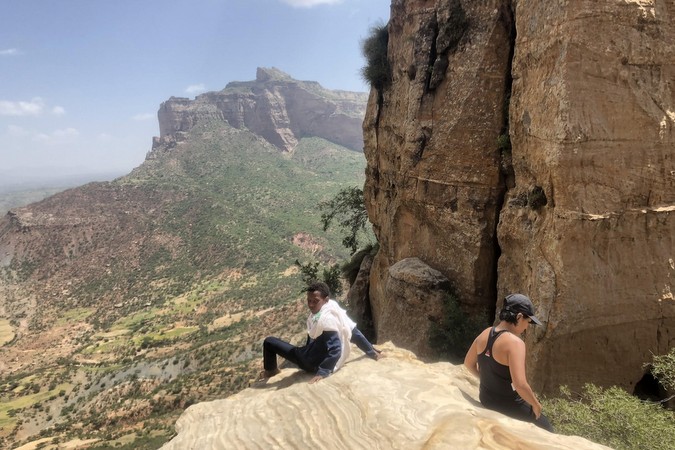
After around one-and-a-half-hours of climbing, we dragged ourselves over the lip onto the top – tired, relieved, but delighted. Our reward was a 50cm ledge, barely enough to stand on, but boasting gorgeous views over the lands below. In awe, but aware of the long drop just inches from our toes, we pushed on to the church itself to discover the wonders inside.
Like many Ethiopian Orthodox churches, Abuna Yemata is divided into three chambers – a music room, a Holy Communion room, and a room that holds an Ark of the Covenant replica. The domed walls of the church were decorated with stunning frescoes depicting tales from the Bible. We stood in awe, taking in these near-perfect original artworks which have sat there for centuries, preserved by the environment’s lack of humidity.

As we explored in a blissful daze, we met the kindly priest who makes the same perilous climb every day to continue the work of the early Christians who created this 6th century church. The experience of meeting him and feeling the undoubted spirituality of the church is overwhelming. The climb is tough, sure, but ultimately a small price to pay to visit this unique monolithic beauty.
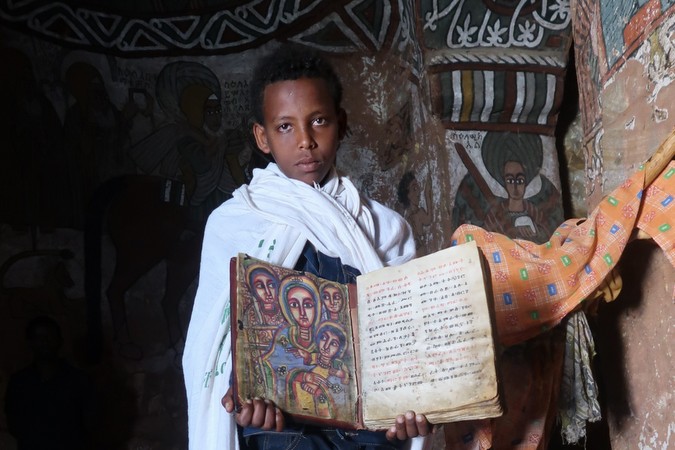
While our experience was a magical one, I do want to reiterate that some people simply won’t be able to do it. In particular, the last few meters are very difficult and require a great deal of physicality (and a fair bit of bravery too). Yes, you’ve got to make your way around the corner of that small ledge you see in this photo with a straight drop down right next to where you step.
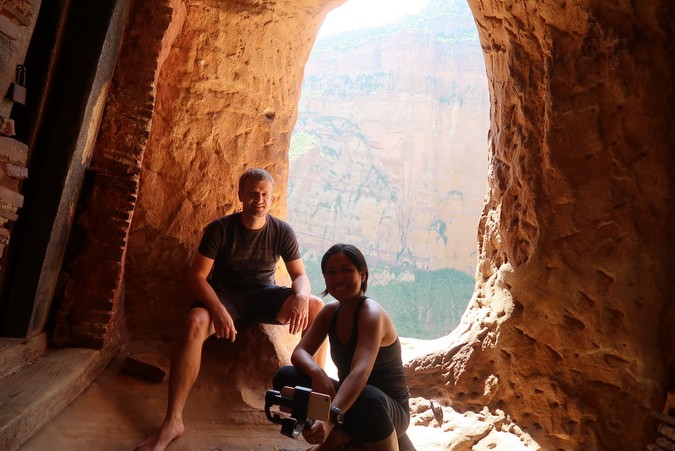
We took our journey with a Spanish couple travelling with their parents. As we reached the last stretch, the parents felt the final push was too much of a risk for them.
We weren’t told at the beginning of the trip how difficult it was going to be nor was there any orientation.
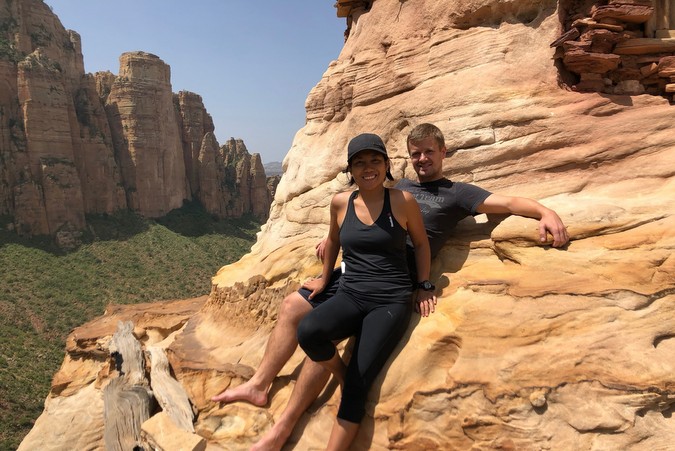
I feel if they had been warned before they made the ascent, they might not have gone on it in the first place – Ethiopia’s tourism industry still has a way to go to meet the high standards found in other parts of the world.
However, if you think you can handle the physicality, then we definitely recommend you to make the journey to Abuna Yemata – so long as you’re not afraid of heights.
WATCH: Climbing to the Abuna Yemata church (© Erika Atienza)
To comment on this story: Login (or sign up) to our app here - it's a troll-free safe place 🙂.![]()








